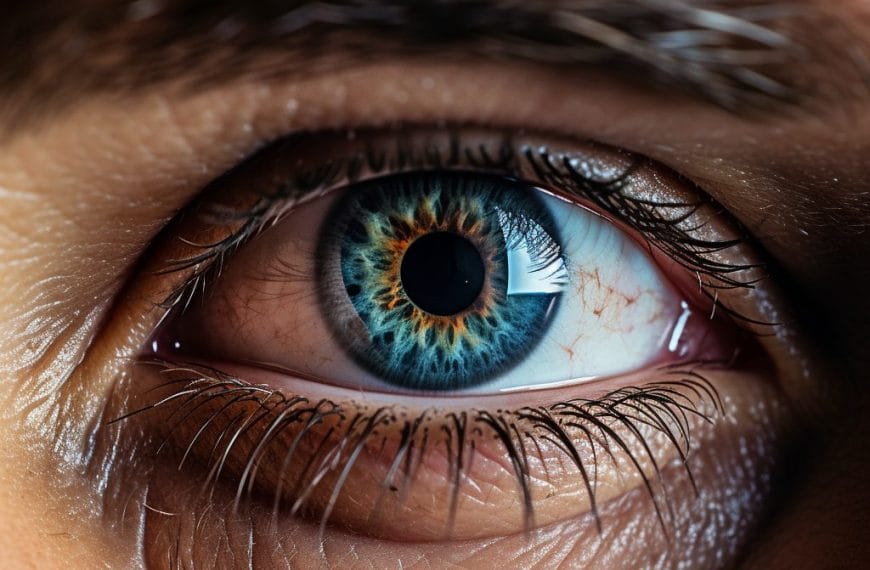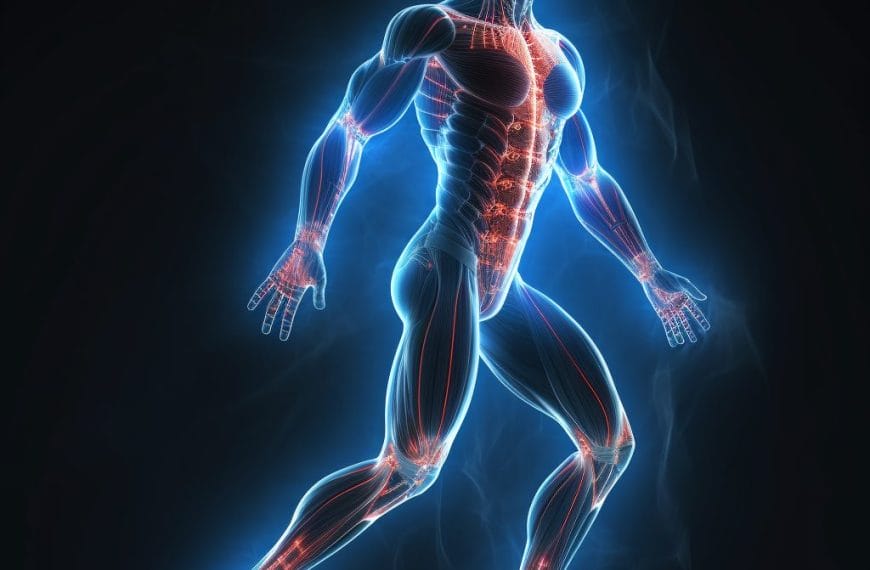Quick Answer: Cats almost always land on their feet thanks to an incredible survival instinct called the righting reflex. This innate ability combines their uniquely flexible spine, a sophisticated inner-ear balance system, and sharp vision, allowing them to twist and orient their body in mid-air for a perfect, paws-down landing.
Defying Gravity—Understanding the Cat Righting Reflex
It’s an image we’ve all seen: a cat tumbles, and in a flash of fur and a flick of the tail, it gracefully lands on all four paws, seemingly unfazed. This isn’t magic; it’s a masterpiece of biological engineering known as the cat righting reflex. This is an innate, automatic ability that allows a cat to sense which way is down and reorient itself during a fall to ensure it hits the ground feet-first.
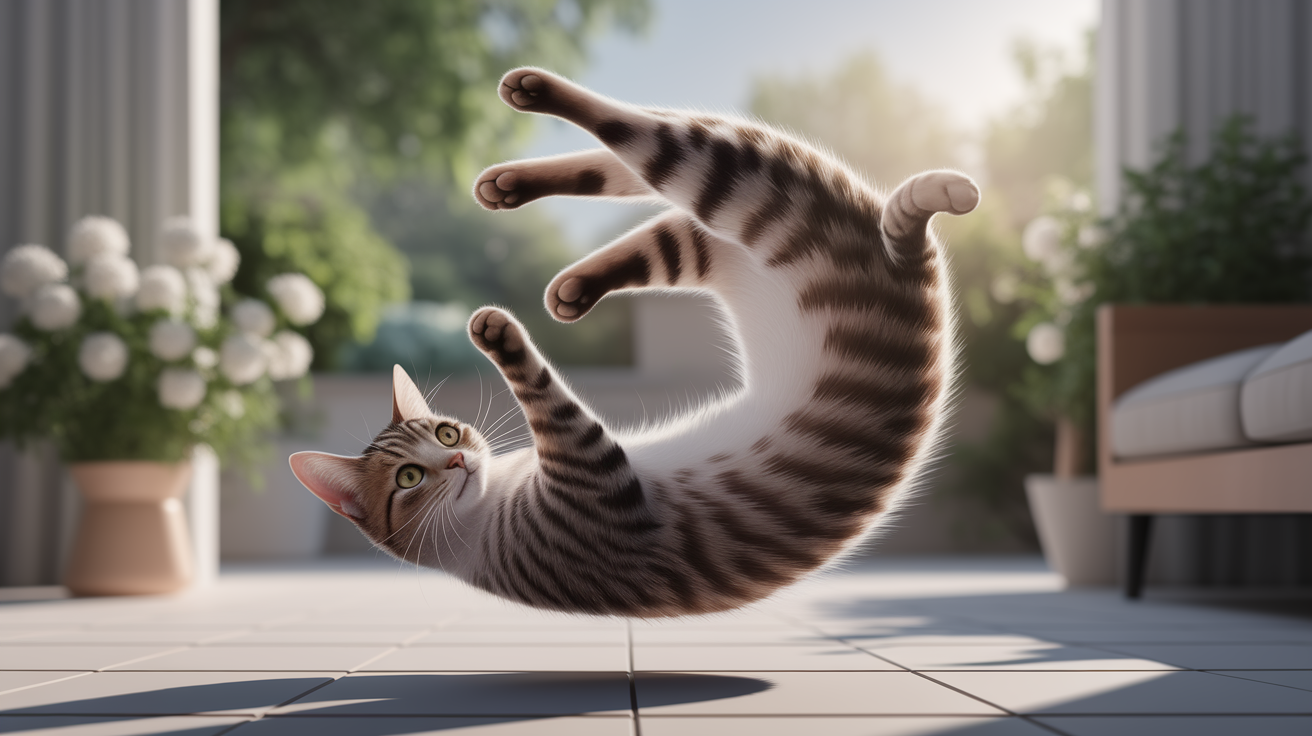
This remarkable skill is not something a cat has to think about. Much like we automatically pull our hand away from a hot surface or get watery eyes when cutting onions, the righting reflex is a physiological reflex that happens without conscious thought. For a small animal that loves to climb, this survival instinct is crucial. Whether escaping a predator or misjudging a leap, the ability to land on its feet minimizes injury and allows for a quick getaway, making it one of the most famous examples of an animal’s mid-air acrobatic capabilities.
The Twist and Turn—Mechanics of the Righting Reflex
So, how does a cat twist in mid-air without anything to push off of? It seems to defy the laws of physics, but it’s actually a brilliant application of them. A cat’s body performs a complex and rapid sequence of movements, all thanks to its unique cat anatomy.
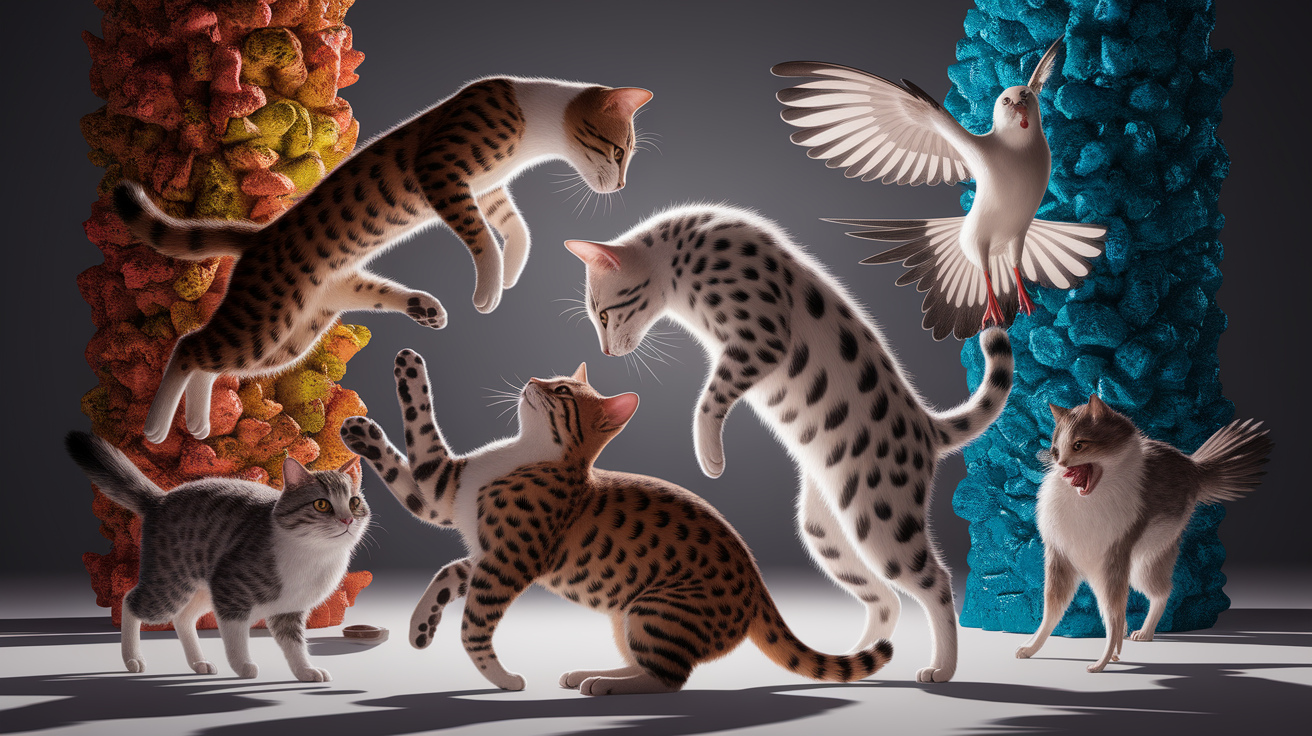
At the heart of this ability are two key features: an incredibly flexible spine and the absence of a rigid clavicle (collarbone). A cat’s spine has more vertebrae than a human’s, allowing for extraordinary rotation. Here’s a step-by-step breakdown of the mid-air twist:
- Bend and Assess: The moment it starts falling, the cat bends in the middle of its body, allowing the front and back halves to rotate separately.
- Twist the Front: It tucks its front legs in to decrease its moment of inertia, allowing the front half of its body to rotate quickly. Think of an ice skater pulling their arms in to spin faster.
- Counter-Twist the Back: While the front half twists, the cat extends its rear legs. This increases the moment of inertia for the back half, making it rotate more slowly and in the opposite direction.
- Flip the Back: Once the head and front paws are oriented correctly, the cat reverses the process. It extends its front legs and tucks its back legs, quickly flipping the rear of its body into alignment.
This clever manipulation of its own body parts follows the principles of rotation and forces in motion, allowing it to complete a full 180-degree turn with its paws aimed at the ground, ready to absorb the impact.
Inner Ear and Eyes—The Sensory Toolbox
The physical twisting is impressive, but it wouldn’t be possible without a sophisticated sensory system telling the cat which way is up. The command center for the righting reflex is the vestibular system, located in the cat’s inner ear.
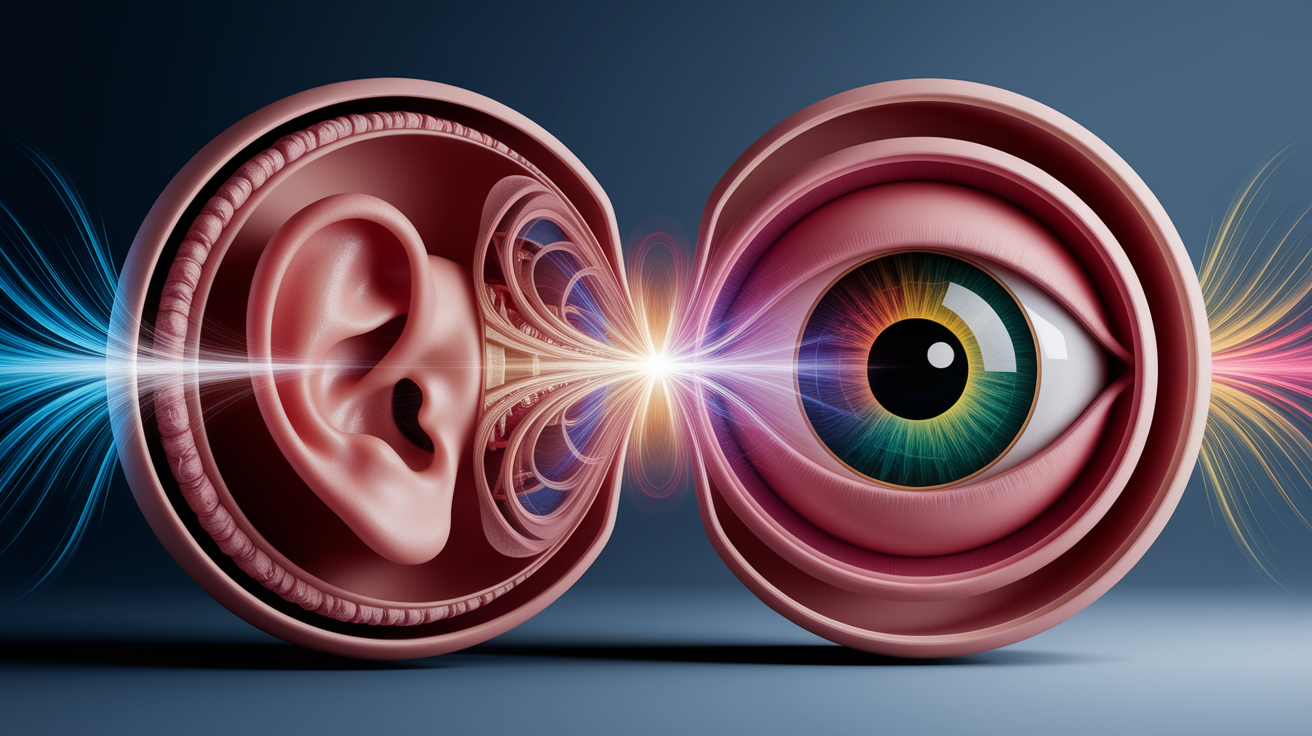
You can think of a cat’s vestibular system as a highly sensitive, biological gyroscope. It contains fluid-filled canals and tiny crystals that move when the cat’s head rotates or changes position. These movements send lightning-fast signals to the brain about its orientation relative to gravity. This entire process is an involuntary response, coordinated by the body’s physical network and the autonomic nervous system.
While the inner ear is the primary tool, a cat’s vision also plays a key role. Its sharp, binocular vision provides immediate visual cues about its surroundings, helping it confirm its orientation and prepare for landing. This combination of the vestibular system (balance), vision (sight), and proprioception (the sense of where its limbs are) creates a powerful sensory toolbox for perfect landings.
From Flop to Flip—Development in Kittens
Cats aren’t born with this perfect acrobatic skill. The righting reflex is an innate behavior, but it requires development and practice to perfect. This ability begins to appear in kittens at around three to four weeks of age. By the time they are six to nine weeks old, they have typically mastered the flip.
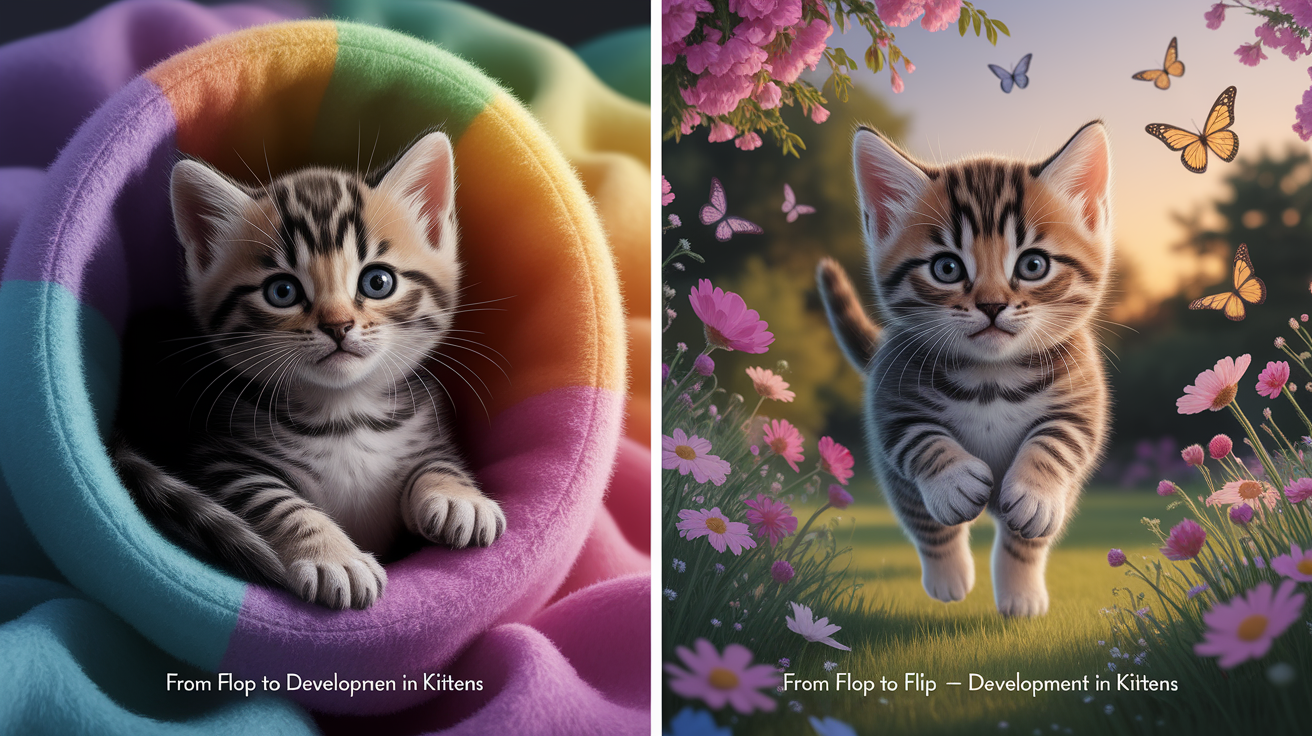
Watching kittens develop this reflex is like watching tiny athletes in training. Their first attempts might be clumsy and uncoordinated, but with each playful tumble, their neurology and muscles learn to work together seamlessly. This learning process fine-tunes the reflex into the graceful motion we see in adult cats.
Interestingly, this is not an exclusively feline superpower. Other animals, like rabbits, rats, and some lizards, exhibit similar righting reflexes, highlighting what a successful evolutionary adaptation it is for small, agile creatures.
Stick the Landing—Why Every Cat Knows How to Land on Its Feet
While the phrase “cats always land on their feet” is mostly true, the righting reflex has its limitations. The success of the landing depends heavily on the height of the fall.
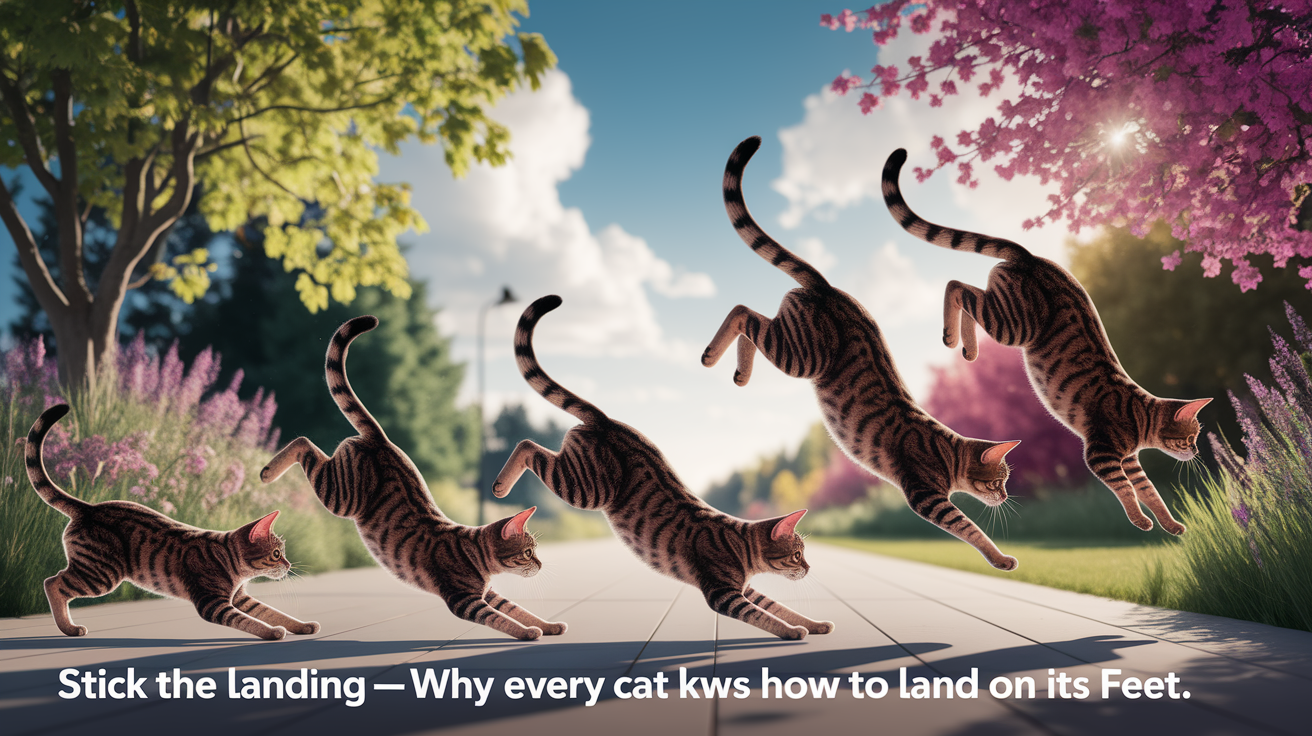
- Falls from low heights: A fall from a very short distance (e.g., less than a foot or 30 cm) might not give the cat enough time to complete the full rotation, which can lead to an awkward or injurious landing.
- Falls from high heights: From greater heights, a cat has plenty of time to right itself. It will then extend its legs and relax its body, spreading out like a parachute to increase air resistance and slow its fall. A cat’s terminal velocity (the maximum speed it reaches during a fall) is much lower than a human’s, but the impact can still cause serious injuries like chin, chest, and leg fractures.
It’s a common misconception that cats are immune to fall-related injuries. Even with their amazing reflex, a fall from a significant height is extremely dangerous. Factors like age, excess weight, or health conditions like inner ear infections can impair a cat’s ability to perform the maneuver correctly.
Wrapping Up: A Marvel of Nature
The cat righting reflex is a stunning example of evolutionary brilliance, blending advanced feline physiology, precise neurology, and fundamental physics into a single, life-saving action. While it gives our feline friends an incredible advantage, it’s not a guarantee of safety. The best way to appreciate this natural superpower is to ensure our cats are safe by securing windows and balconies, preventing the need for them to use it in the first place.






